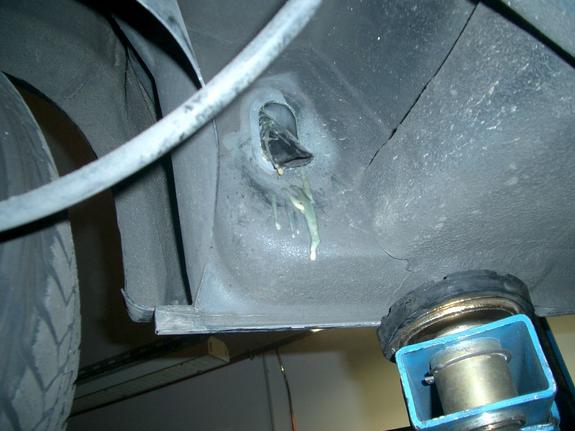The slits on the sills are not drains for the hood. Water off the hood drains into the rain rail, a sort of gutter. Rain water is then conduction to collection cups which are just behind the seatbelt towers. Water than drains out via approx. 2cm diameter tubes.
These are the drain tubes through which all the rainwater off the hood should be flowing through (Mk1 and Mk2 only):

See this video of the drain in action:
https://www.youtube.com/watch?v=1VHvtX0Z1SM
The sill slits, two per side are (straddling the jacking points), I suppose, about 1cm by 2-3mm. A calculation of cross sectional area will show these are incapable of flowing as much water as the drain tubes.
Occasionally owners may find the sill full of water, and clearing these slits helps clear. Water is not supposed to get into these sill sections. Annoyingly, water will tend to flow down the outer surfaces of the inner sills/inner wings, and will first pool in the non-draining area, before overflowing into the main sill.
The non-draining area ALWAYS rots out faster

And here is how water gets in these; a welded seam failing

The slits, they are tiny:

And if these are designed to relieve flooding in the sill, why do they straddle the easily, and often damaged jacking point, and why not place more?
Water gets into the sill because:
- The drain tubes are blocked, causing the collection cups to overflow, into the sections either side of the wheel arches (look in the boot), collecting in the sills.
- The rain rail is damaged or badly fitted.
- The drain tubes have detached; these are only a friction fit, and overly vigorous cleaning can detach them
- Boot area leaks; the water can track back, either side of the wheel wells, into the sill
- Condensate; water vapour condenses on cold metal. We live in a damp country.
My view is that although these slits are useful for relieving pooled water in the sills, their major junction is the ventilation of sills. Most cars built during the last 40 years have had some kind of system to ventilate sills (tin top cars still manage to get sills rotting from the inside out), with varying degrees of sophistication. Some Rovers and Saabs, for instance, used to conduit hot air from the engine bay into the sills.
The confusion is exacerbated by Mazda North America (only) referring to drain holes in a 1994 TSB. I suspect there was a realisation that the rain rail was an inadequate design (the Mk2 has a revised design, using different construction and attachment).
Drainage at the front is achieved by collection cups moulded into the windscreen rubber seal. On the Mk2, the size of this cup was enlarged. Small amounts of water are supposed to collect here, and drain through a soft rubber tube, and over the sill threshold. But there is an obvious flow; the tube becomes compressed by the door (and on the passenger side, this might become permanent because that door isn’t used so much), and the vinyl hood ages, allowing more water to collect. Flaws here allow water to soak the front footwell carpet. If water gets under the backing membrane of the carpet, it has the potential to ruin the ECU located in the passenger footwell.
Perking uphill or downhill has bedeviled the MX5 community for 30 years. Park facing downhill, and there is increased chance water will collect in the foot wells. Park uphill and the water collects behind the seats, or just drains out of the boot.
Cars with aircon can have additional drain problems; this probably why Americans are reporting rotted footwells:
https://www.youtube.com/watch?v=iHhwXRzRraM
If water is regularly pooling in your sills, you have bigger problems that just keeping some slits clear.



